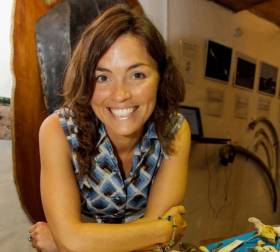Displaying items by tag: Lucy Hunt
Giving the Oceans Rights Through The Ocean Race - Marine Biologist Lucy Hunt
There is no greater community to understand the changes in the oceans and what needs to be done to protect them than sailors.
From those like myself, a leisure sailor, to fishermen, to marine scientists, to the professional seafarers, greater awareness comes from being on the water and gives mariners, in the widest sense of the word, more understanding than those who are shore-based.
So the decision of the Ocean Race, which I once sailed in when it was called the Whitbread Round the World, “to collaborate with the United Nations to help support its ‘Clean Seas’ campaign” brings professional racing sailors to the forefront as ‘ocean people’ tackling the growing problem of marine litter.
 Relating land to sea - One Blue Ocean
Relating land to sea - One Blue Ocean
I learned a lot racing across the Atlantic on NCB Ireland, an 18-day passage in 1990 when the world’s oceans were in a different state to what they are now. It helped form my own views about the ocean environment. The partnership by the Volvo Ocean Race with the UN is to use the sailing platform to help ‘Turn the Tide on Plastics’ littering the marine environment.
A marine biologist from Kerry is one of those leading the project, creating ’One Blue Voice’. Lucy Hunt founded the Sea Synergy Marine Awareness & Activity Centre at Waterville eight years ago. She is a Senior Advisor at The Ocean Race and says the oceans should be given rights.
 The Ocean Race
The Ocean Race
“Halt the decline of the seas and protect the future of life on earth by recognising the ocean’s rights,” is the approach of the ‘One Blue Voice’ campaign.
As the Race yachts cross the globe they will gather support and carry petition signatures to present to the United Nations General Assembly in September of next year when the environment of the oceans will be a major topic.
Lucy Hunt is my Podcast guest. Listen below
The ‘OneBlue Voice’ petition can be signed at: www.onebluevoice.net
County Kerry's Big Presence in October's Volvo Round the World Race
Kerry will have a dominant presence in this year’s Volvo Round the World Race. Three of the Kingdom’s notable maritime figures are involved and, with Olympian Annalise Murphy also sailing, there will be strong Irish interest, writes Tom MacSweeney.
Biologist Lucy Hunt who runs Sea Synergy Marine Awareness Centre at Waterville has been appointed Sustainability Education Manager by Volvo Ocean Race, to develop an international schools programme on ocean literacy and ocean plastic pollution.
Damian Foxall from Kerry will sail with the former Team Vestas Wind now Vestas 11th Hour Racing. Brian Carlin of Tralee Bay Sailing Club. who was onboard reporter when Team Vestas hit rocks in the last race, has been appointed to lead the team of onboard reporters who will be embedded on the racing yachts
Annalise Murphy is with the Dee Caffari ‘Turn the Tide on Plastic’ entry, which should interact nicely with the work of Lucy Hunt.
While she is working with the Volvo Race, Sea Synergy will continue its operations in Kerry, where she has appointed a manager to run the centre and an Iveragh Learning Landscapes Weekend is planned for October 6-8. This is the second year o fthe event.
“A range of talks and workshops will be held in Waterville, Caherdaniel and Ballinskelligs by national and international facilitators including 4 marine themed workshops – learning in one of Irelands best classrooms – the seashore,” Lucy Hunt says.





























































